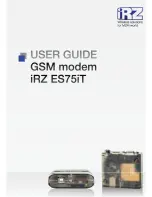
THEORY OF OPERATION: Transmitter Path Section
8
ADDAG to the ODCT. After receiving the data, the ODCT toggles the ASW line,
which signals the ADDAG to turn on the PA and the antenna switch to start trans-
mitting.
ADDAG
The ADDAG (Analog-to-Digital/Digital-to-Analog Glue logic) converts the serial
I & Q words to parallel I & Q words, truncates them to 8 bits and sends them to
dual 8-bit D/A converters. The D/A converters take the digital I & Q words and
convert them into analog signals, which then are filtered and amplified. The base-
band filters have a 10 kHz pass band. The output is comprised of two separate
low-level differential signals, I & Q. A differential output is used to minimize
noise pickup, due to its inherent common mode rejection. The output signals are
routed to the ODCT IC where the transmitter now becomes a closed loop.
ODCT
The ODCT (Offset Direct Conversion Transmitter) is the heart of the transmitter;
it incorporates an offset synthesizer and all of the circuitry necessary to implement
a cartesian feedback closed-loop system. The iZIF offset synthesizer phase locks
an external VCO at 301.8 MHz. This is divided down in the ODCT to 150.9 MHz
in the quadrature generator of the internal image reject mixer. The divided down
offset LO is then mixed with the main LO in the image reject mixer. The output of
the mixer is the carrier frequency.
The differential baseband signals from the ADDAG are input into the ODCT on
pins 57-60. They go through a variable attenuator and are then summed with the
down converted I & Q feedback. The baseband signal is then amplified and sent to
the upmixers.
The upmixers consist of two mixers, one for the I channel and one for the Q chan-
nel. The output of the image reject mixer is split into quadrature (90 degrees phase
difference) and is mixed with the baseband I & Q signals to produce an I and a Q
signal at RF frequency. The two RF signals are then summed, producing a com-
plex modulated RF signal (QAM). The signal is then output, differentially on pins
51 and 52.
















































